I Resolved to 'Shop My Closet.' Here's How It's Going
"Shop your own closet" has been a call to look at what you already own rather than buy new things.


As the clock struck midnight on New Year's, I was thinking about a purse.
I'd recently gone to a women's alumni networking event and was struck by how neat everyone looked with their smooth leather crossbody bags. I clocked Kate Spade flaps and Donna Karan saddles, smartly paired with wool coats. I was thinking about buying a new purse to better fit in.
But as we headed into the new year, I remembered something relatively important: I already own a bunch of purses. Why was I so set on buying a new one?

Sign up for Kiplinger’s Free E-Newsletters
Profit and prosper with the best of expert advice on investing, taxes, retirement, personal finance and more - straight to your e-mail.
Profit and prosper with the best of expert advice - straight to your e-mail.
I was already planning on participating in "Dry January," where you don't drink alcohol for the month, and decided to take a similar tact with shopping, as some people do with a "no-buy" or "no-spend" month. Part of Dry January is to consider your drinking habits — why you feel compelled to drink in certain situations — as well as to gain the health impacts of abstaining for 31 days.
The same can be said for shopping. Throughout January, I recognized my compulsion to buy a new bag as a way to meet the perceived need of fitting in. I thought about how I was chasing the dopamine rush that comes with making a purchase.
I also considered, like the health impacts of alcohol, the financial impacts of following through on those shopping yens. Six months ago, I bought a purse that I reasoned with myself, as a bit of girl math, was an "investment." But the more I wore it, the more I thought about it as "the same bag every woman in the West Village has." The initial rush of dopamine turned into "why did I spend $[redacted] to look like every other woman on the block?" Was I really going to waste that amount of money every six months for the rest of my life?
So, rather than buying a new purse, I decided to "shop my own closet" — make use of what I already own. Here's what that looked like to me.
1. Change what you own to fit your needs
As I thought about the type of purse I wanted, I realized it was already sitting in a pile in my closet — it just needed a little adjustment.
My grandmother was a tailor, and because of her, I look for high-quality materials and construction when I buy clothes and bags. This means products last longer instead of falling apart, and it also means they can be changed as trends (and waistlines) evolve. So when I think about shopping my own closet, I also think about how I can change what I have to fit what I want now.
One option is tailoring.
A few years ago, I gave my grandma a handful of dresses that I no longer fit into and asked what she could do. Some she was able to alter so they'd fit; others we turned into tops and skirts. Following her lead, I took a sewing class so I could alter my own clothes. This can save on exorbitant tailoring prices for something simple like hems as well as give the option to make a shirt fit exactly how I want it to, rather than let it rot in my closet.
Of course, you don't have to learn how to sew yourself: You can always go to a local tailor. Often, altering a garment is less expensive than buying a new one, and it almost always means preserving fabric rather than sending it to a landfill. But if you live in a high-cost-of-living place and are as stubborn as me, learning how to use a sewing machine is beneficial.
Another option is accessorizing.
My purse problem was laughably easy to solve, no sewing machine necessary. I had a Coach wristlet in my closet from circa 2005 that looked good as new (if you hold onto anything long enough it'll come back in style), but it had a short strap making it less likely for me to wear. Remembering my admiration of the crossbody bags at the alumni event, I simply went to the Coach website and looked for crossbody straps. You can always look for purse straps from less expensive retailers, and Coach Outlet has options at lower price points, too.
All it took was thinking about what the sticking point was to find the obvious solution. With that, I was able to transform my old purse into something new. You can also try this with styling and accessorizing. For example, if you're bored by your purse, why not try a new charm or scarf on it? As an added bonus, you can use those accessories with other outfits.
2. Restore your older bags and clothes
After the Coach miracle, I took a hard look at my other purses and considered why I didn't wear them as often. Some I inherited, and while they're timeless designs, the material has worn in the decades since they were purchased and some elements have started to break.
I realized the solution here was to fix what can be fixed.
Again, for some of these bags, the solution was laughably easy. I took them to a shoe cobbler who re-glued and tied straps and buckles in minutes. It was such a simple fix he refused to charge me for it (I left a tip anyways).
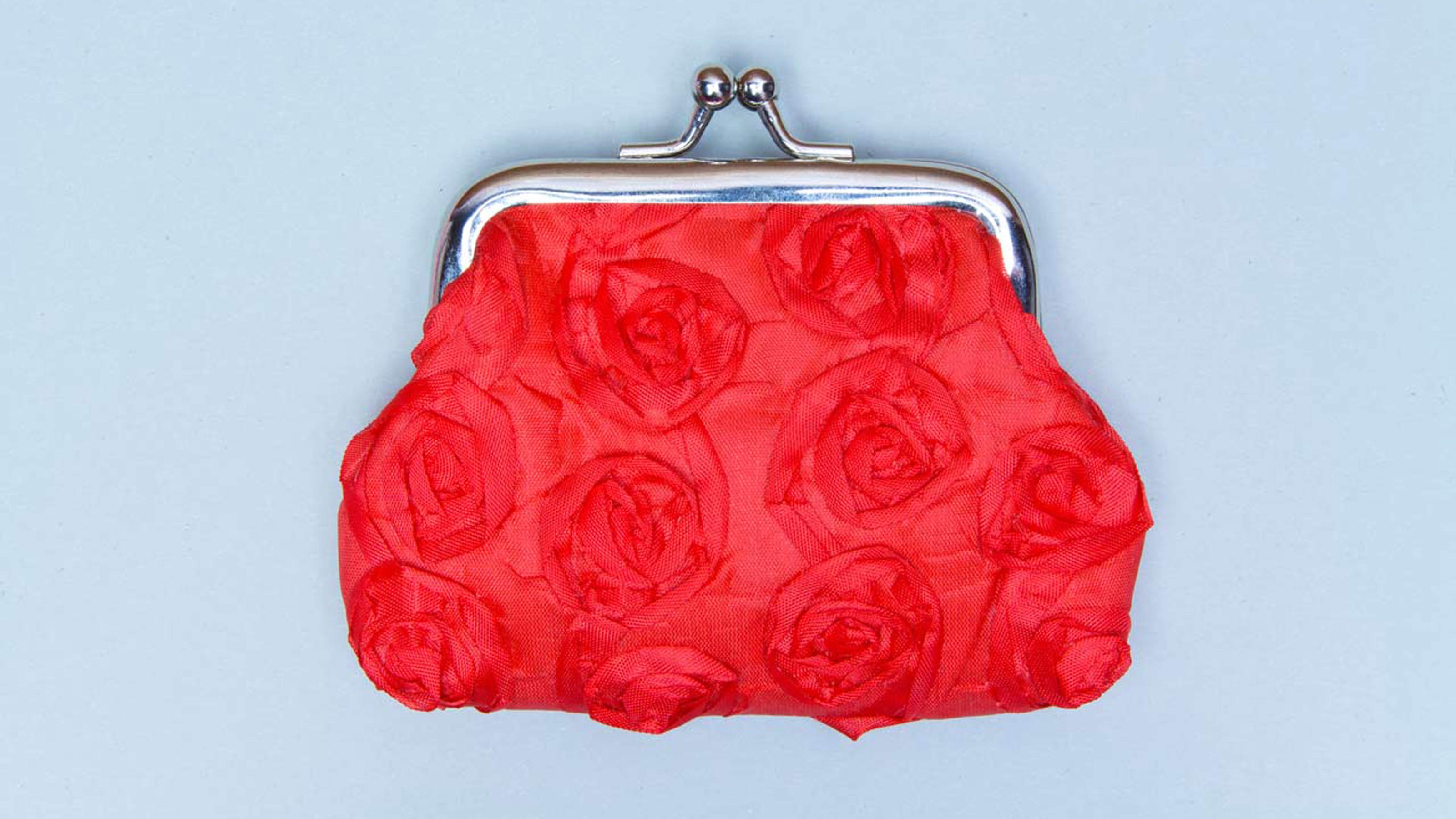
Others required more investment. I found a leather repair store and asked about restoring the exteriors of purses. This is where you'll need to do mental calculations considering the financial balance. The restoration estimates were higher than I expected, so I compared them against the value of the vintage purses.
Value means monetary, of course, as well as emotional and practical. For a more monetarily valuable purse I knew I'd wear a lot more, it made obvious sense to pay for the restoration. For less valuable purses I'd wear once or twice a year, I decided to wait and think about it.
I also found myself considering restorations an honor to the memory of the bags' first owner, or thinking about how delighted my grandmother would be when I showed her I'd taken care of her purse from the '80s — and then I stopped myself. It wouldn't necessarily make practical sense to spend money and materials to repair a purse I wasn't planning on wearing often. I set aside the emotions and decided to not repair those, for now.
3. Let someone else shop your closet
The reality is you're not going to hold onto everything you've ever bought forever. While you can alter and restore some things, others will just take up space. At a certain point, you're going to need to get rid of something.
The environmental impact of mass production and overconsumption was another compelling reason for me to hold back on buying a new purse. One step towards a solution to that problem is buying secondhand rather than new, and you can flip that reasoning to consider how to get rid of items you don't want anymore. Rather than shopping your closet, let someone else shop your closet so the clothes live on.
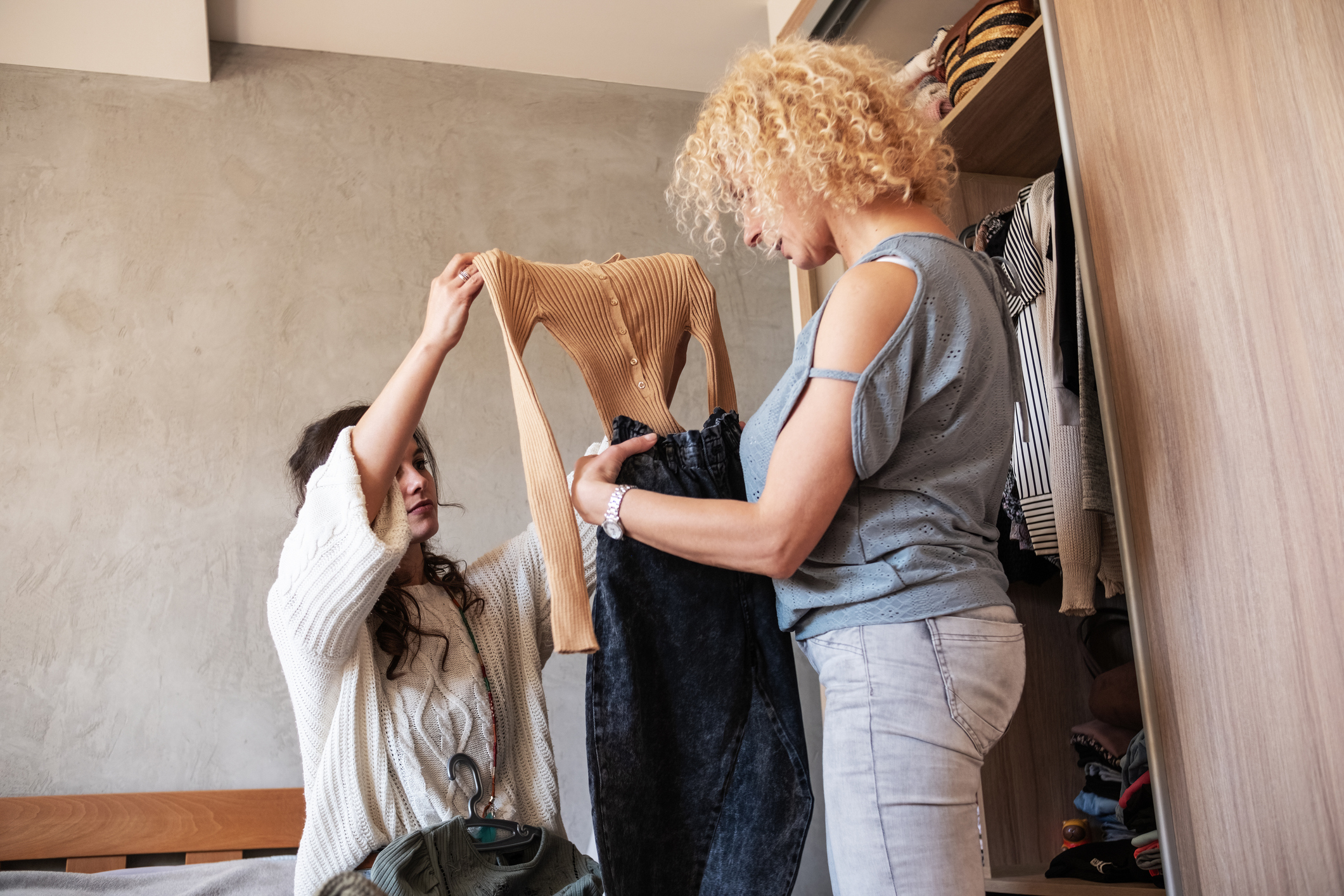
First, consider if anyone in your life would want what you're KonMari-ing. When my friend took a new job with a less-conservative style while I was returning to office post-COVID, for example, she passed her slacks and blazers on to me.
Second, think about donations. I'm sometimes wary of dropping bags off at larger thrift stores as there have been reports of donations ending up in landfills anyways. One tact is to get to know local shelters and charities and their needs, like coat drives or business-wear giveaways.
Third, think about selling. Maybe there's a consignment store nearby or you can look to places like Thredup, for example, an online consignment store.
If you're disposing of designer goods, I found TheRealReal, which measures its social impact, fairly practical. Instead of trying to take great photos and expertly list my own items, I can simply drop them off at TheRealReal's brick-and-mortar locations and they take care of the rest. What I earn if the items sell won't necessarily be as high as if I'd sold it myself, but I consider it a good exchange for the company doing the selling work for me. It's less a lucrative side hustle, more a bonus for cleaning out my closet.
At the end of the day, though, if you're worried about the environmental impact of shopping, the best thing to do is to shop less and buy items you know will last, both by quality and taste.
What I learned shopping my own closet
The work of shopping my closet achieved several goals: I learned to appreciate the items I have and gave them new life while taking more sustainable measures and saving money.
I also recognize I'm never going to be a perfect consumer. As much as we try to think reasonably, shopping is ripe with emotions. Throughout this process I encountered every feeling from insecurity, pride and boredom to grief, climate anxiety and gnawing guilt that I should really call my grandma more.
Much like Dry January, the idea of exercises like this is to be able to recognize your habits and feelings and where they come from. The more we're able to do that, the more we're able to hold back on the impulse to click "buy now."
And this doesn't mean I'll never buy a new purse again — or that I'll sweat with indecision at the counter. Rather, it means I'll be better informed and able to slow down the racing thoughts to make a decision with more practicality.
Related Content
Get Kiplinger Today newsletter — free
Profit and prosper with the best of Kiplinger's advice on investing, taxes, retirement, personal finance and much more. Delivered daily. Enter your email in the box and click Sign Me Up.

Alexandra Svokos is the digital managing editor of Kiplinger. She holds an MBA from NYU Stern in finance and management and a BA in economics and creative writing from Columbia University. Alexandra has over a decade of experience in journalism and previously served as the senior editor of digital for ABC News, where she directed daily news coverage across topics through major events of the early 2020s for the network's website, including stock market trends, the remote and return-to-work revolutions, and the national economy. Before that, she pioneered politics and election coverage for Elite Daily and went on to serve as the senior news editor for that group.
Alexandra was recognized with an "Up & Comer" award at the 2018 Folio: Top Women in Media awards, and she was asked twice by the Nieman Journalism Lab to contribute to their annual journalism predictions feature. She has also been asked to speak on panels and give presentations on the future of media and on business and media, including by the Center for Communication and Twipe.
-
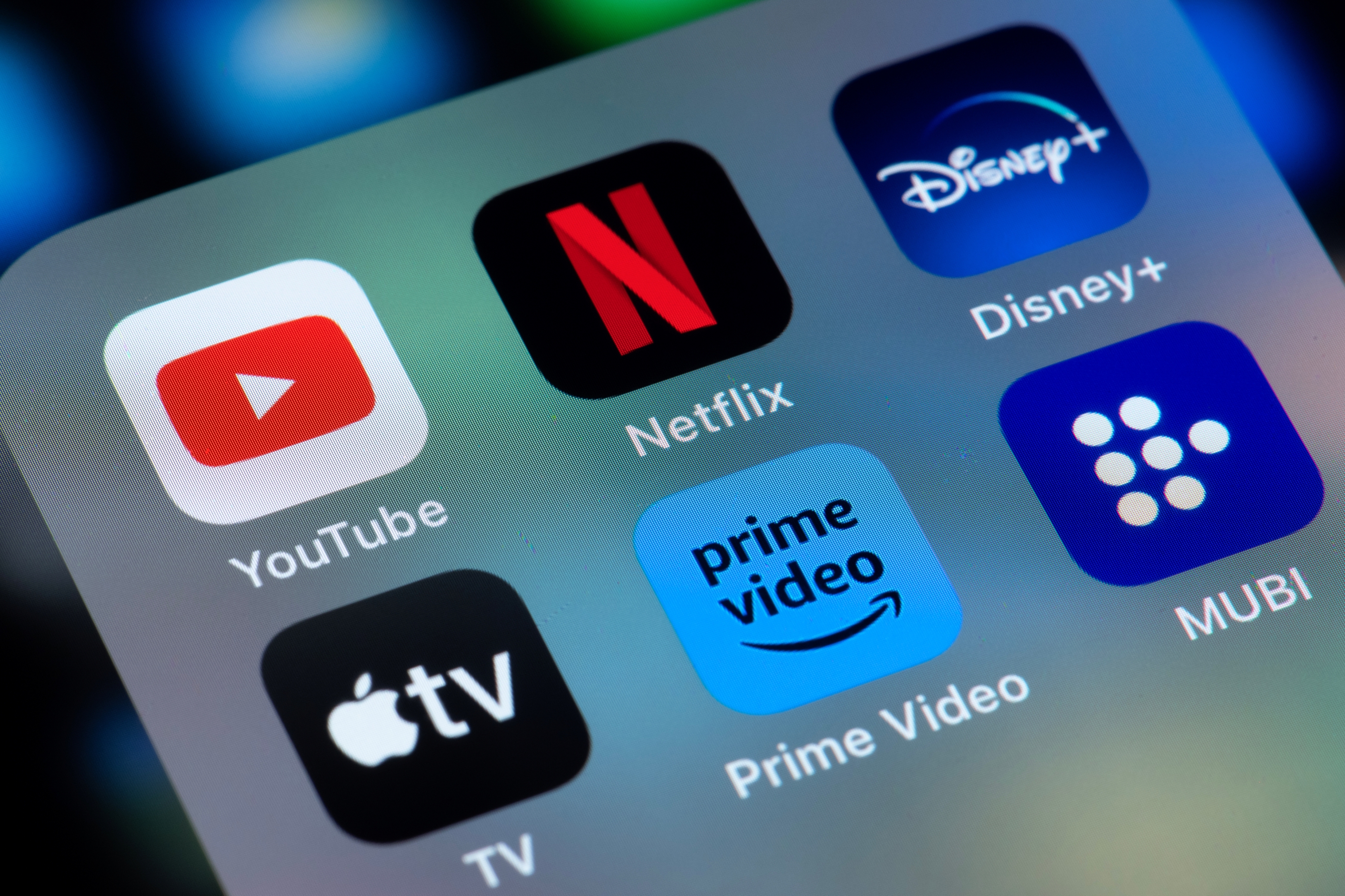 How to Get Apple TV Plus for just $2.99
How to Get Apple TV Plus for just $2.99For a limited time, you can get three months of Apple TV Plus for just $2.99 per month. Here’s how to get the deal.
By Rachael Green Published
-
 Stock Market Today: Stocks Surge to Close a Volatile Week
Stock Market Today: Stocks Surge to Close a Volatile WeekIt was another day with a week's worth of both news and price action, but it ended on a strongly positive note.
By David Dittman Published
-
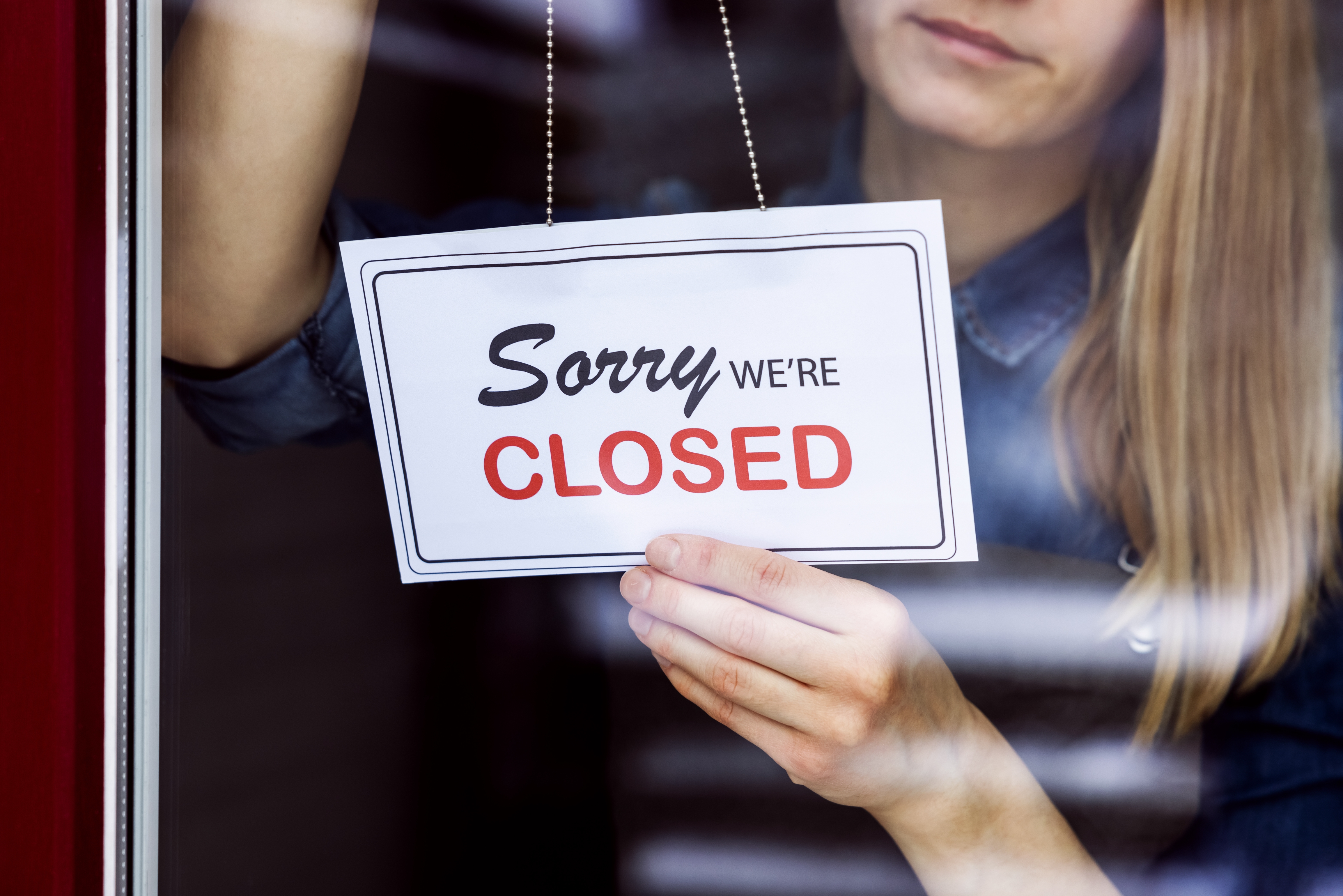 Don’t Panic About the “Retail Blackout” – See Which Stores Are Closing (and Which Aren’t) for Easter 2025
Don’t Panic About the “Retail Blackout” – See Which Stores Are Closing (and Which Aren’t) for Easter 2025Dozens of major retailers are planning to close their doors on April 20. Find out which of your go-to stores are on the list.
By Rachael Green Published
-
 Amazon Haul Online Is Here – Shop Under $20 Deals Without the App
Amazon Haul Online Is Here – Shop Under $20 Deals Without the AppThe Amazon storefront where everything costs $20 or less is now available online.
By Rachael Green Published
-
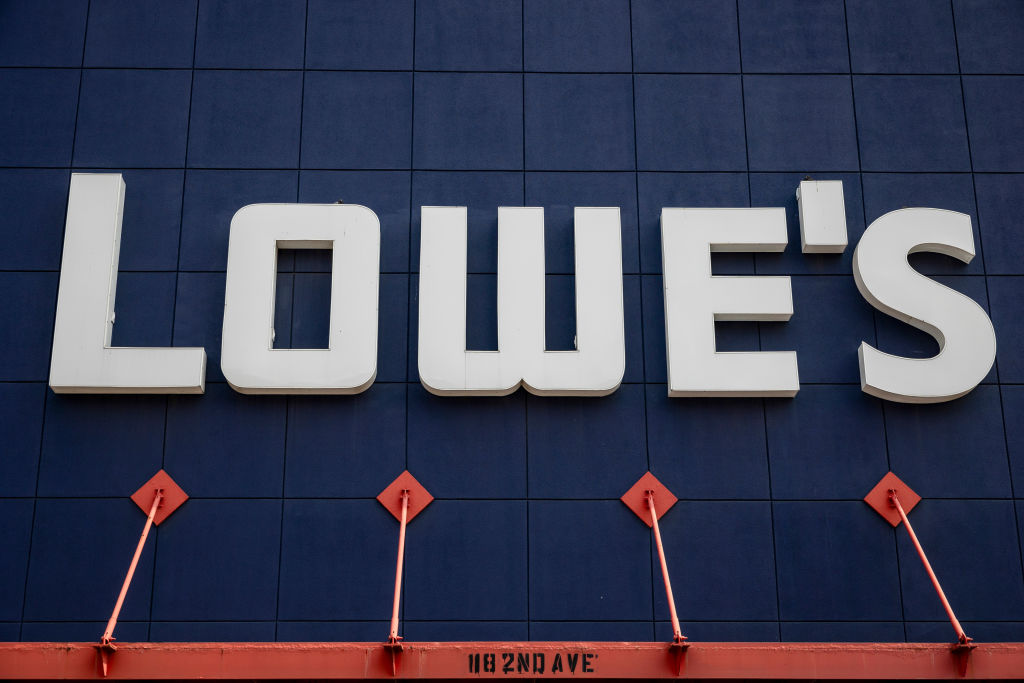 Lowe's Stores Closing All Locations for 24 Hours
Lowe's Stores Closing All Locations for 24 HoursLowe's will close all of its retail locations and contact center for one day in April.
By Sean Jackson Published
-
 Trump's Tariffs Could Make Your Favorite Clothing Brands More Expensive
Trump's Tariffs Could Make Your Favorite Clothing Brands More ExpensivePresident Donald Trump announced tariffs on imported goods from a litany of countries. See how these tariffs will impact your favorite clothing line.
By Sean Jackson Published
-
 GameStop Is Closing More Stores — Here’s Where to Shop Instead
GameStop Is Closing More Stores — Here’s Where to Shop InsteadAs GameStop closes more locations, here’s how to score similar deals on games, consoles and collectibles at other major retailers.
By Kathryn Pomroy Published
-
 How Much You Could Save on Gas with Costco, Walmart and Other Memberships
How Much You Could Save on Gas with Costco, Walmart and Other MembershipsGas prices jumped 10 cents this week. Compare gas savings perks and see how much you’d save with Costco, Sam’s Club, BJ’s, Walmart Plus and Amazon Prime.
By Rachael Green Published
-
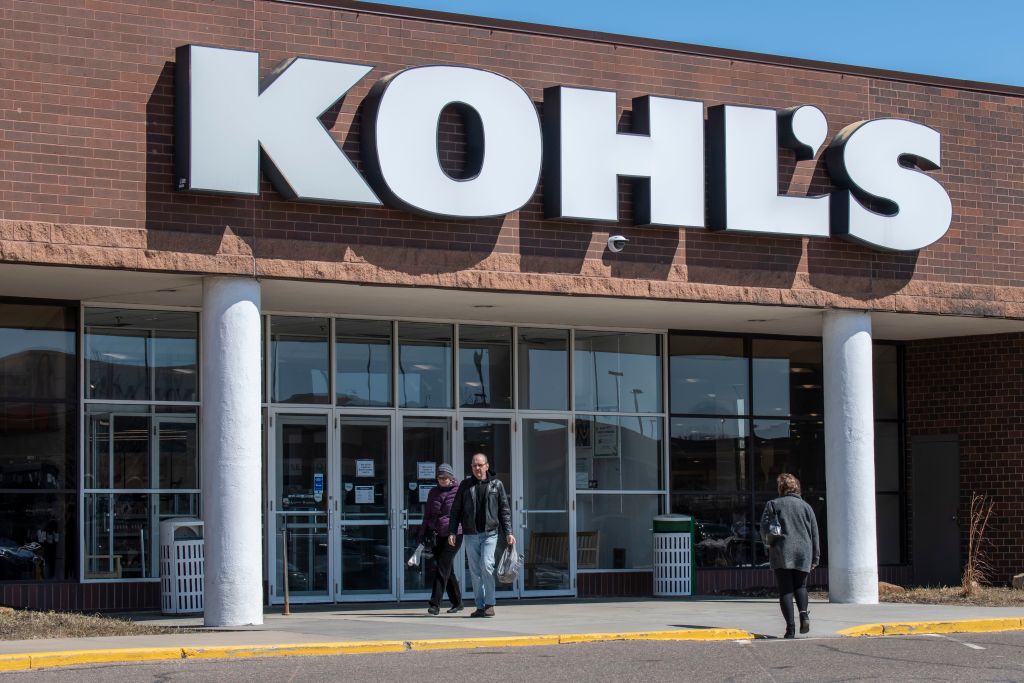 Kohl’s to Close 27 Stores in March 2025 — Is Your Location on the List?
Kohl’s to Close 27 Stores in March 2025 — Is Your Location on the List?Kohl’s is closing 27 stores this Saturday as part of its 2025 restructuring plan. Find out which locations are affected and why they’re closing.
By Paige Cerulli Published
-
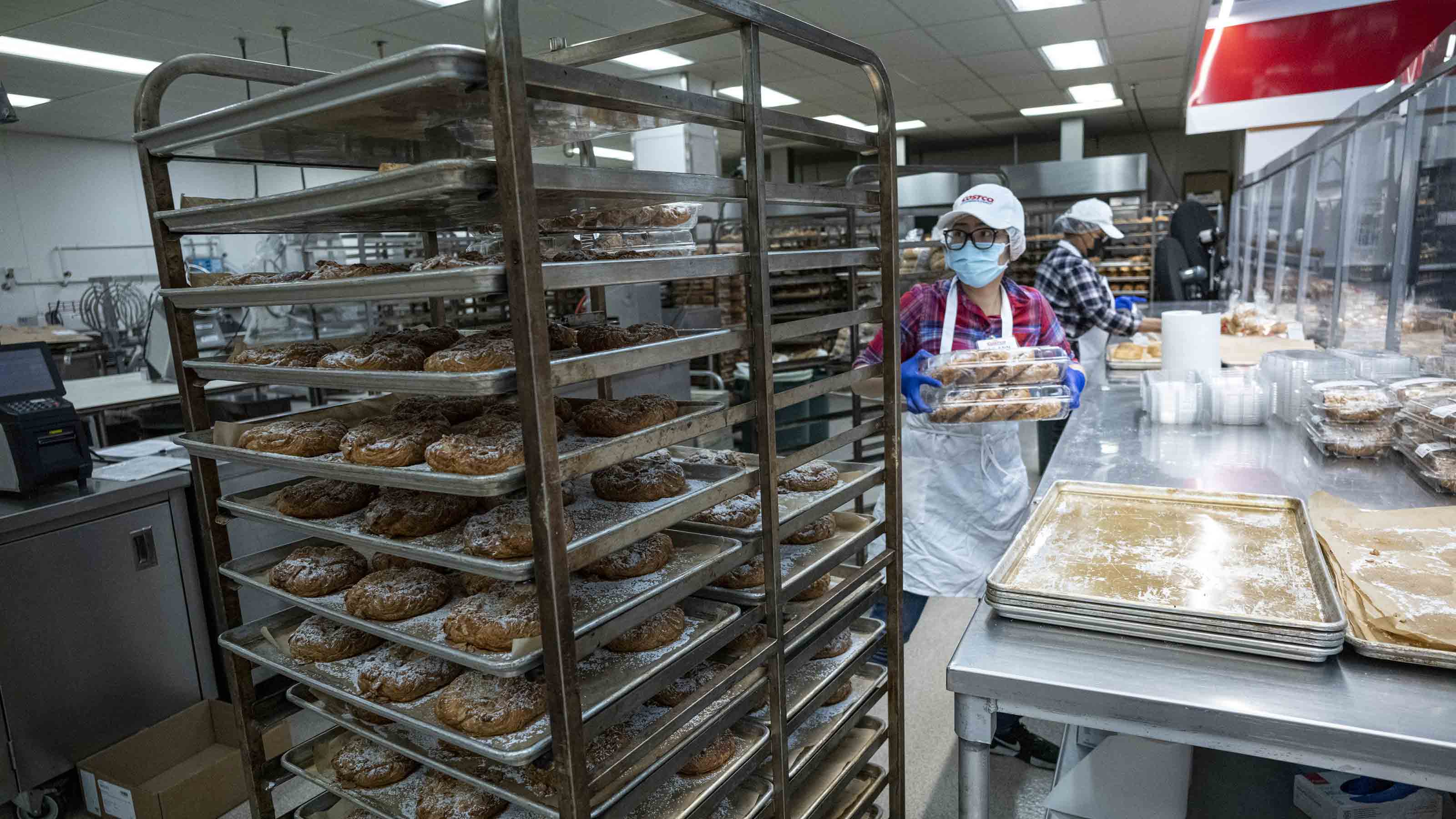 Costco’s 4.5-Pound Tiramisu Cheesecake Might Be Your New Favorite Dessert
Costco’s 4.5-Pound Tiramisu Cheesecake Might Be Your New Favorite DessertIf you haven’t visited your local Costco bakery to check out the Kirkland Signature Tiramisu Cheesecake, you'd better get there early, they are flying off the shelves.
By Kathryn Pomroy Published